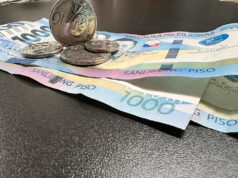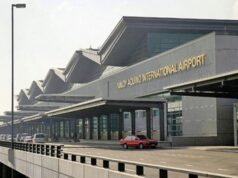THE GOVERNMENT’S economic managers will ask the President to certify as urgent the bill on lifting quantitative import restrictions on rice, replacing it with a tariff scheme.
Socioeconomic Planning Secretary Ernesto M. Pernia told reporters on Monday that the economic team will likely pitch its plan to President Rodrigo R. Duterte before his second State of the Nation Address (SoNA) on July 24.
“We will suggest to him that it could be declared a priority bill so that it can be approved sooner rather than later, so we don’t have to go through to this complicated process of extending trade concessions to countries or members of WTO (World Trade Organization) that might do something in exchange for our delay in tariffication,” said Mr. Pernia, who also co-chairs the Committee on Tariff and Related Matters.
“We are going to have a letter, I think, before the SoNA so that we will have the opportunity to raise the issue,” he added.
Mr. Duterte signed Executive Order No. 23 in April to maintain the quantitative restrictions (QR) on imported rice, meat and other products for another three years, pending the ratification of both chambers of Congress of the amendments to Republic Act 8178 or the Tariffication Act of 1996.
The law would authorize the President to set import duties on the staple grain, upon the expiry of the country’s waiver for the special treatment on rice on July 1.
“… [It] has to be deliberated by Congress before the ratification can take effect. In the meantime, as the deliberations in Congress will take some time what we are trying to do is to not infuriate the members of the WTO, in terms of retaliation,” said Mr. Pernia.
“2020 is quite distant, so we hope that the approval of the tariffication will come sooner so that we don’t have to be extending concessions,” he added.
The country was allowed to impose temporary QRs on rice after the government was allowed “special treatment” for the staple grain upon acceding to the WTO in 1995.
Through this arrangement, the Philippines was given more time to achieve self-sufficiency in rice, a move expected to counter the damaging impact of the expected influx of cheap rice imports.
During the negotiations for the second extension, which was granted in 2014, the Philippines had agreed to, among others, increase the Minimum Access Volume (MAV) to 805,200 metric tons and reduce the in-quota tariff to 35% corresponding to the Asean Trade in Goods Agreement duty and a most-favored nation rate of 40% for volumes imported outside the MAV.
The National Economic and Development Authority said that introducing competition in the domestic market through the tariffication scheme would encourage farmers to increase their self-sufficiency.
Finance Secretary Carlos G. Dominguez III said earlier that he is considering proposing a seasonal tariff for rice, with low tariff rates during the lean months and higher rates during harvest season — but Mr. Pernia said this scheme has yet to be reviewed by the economic team.
“We discuss things and arrive at common decisions. But we haven’t discussed (seasonal tariffs) yet,” Mr. Pernia said. — Elijah Joseph C. Tubayan



